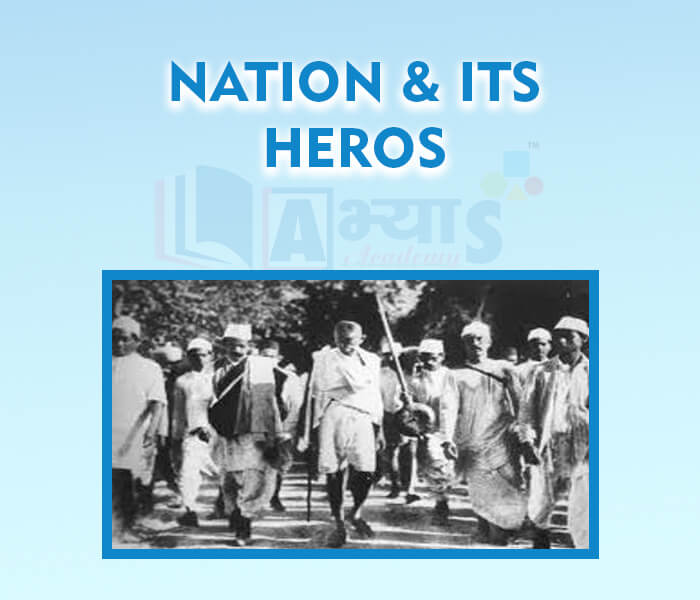Nation And Its Heros













Nation And Its Heros
The Nation And Its Hero: The roles of the women and its heroes were specified in the anti-imperialist movement in Vietnam.
Women as Rebels: Women in Vietnam enjoyed greater equality than in China, especially among the lower classes. As the Nationalist Movement grew, the status of women was questioned and a new image of womanhood emerged. Writers and political thinkers began idealising women who rebelled against social norms. In the 1930s, a famous novel by Nhat Linh caused a scandal because it showed a woman leaving a forced marriage and marrying someone of her choice, involved in nationalist politics. This rebellion against social conventions marked the arrival of the new woman in Vietnamese society.
Heroes of Past Times: Writers like Nhat Linh, Phan Boi Chau portrayed women as patriots, who fought against Chinese domination. Phan Boi Chau wTote a play based on the lives of the Trung sisters who had fought against Chinese domination in 39-43 CE. After Phan's play, the Trung sisters came to be idealised and glorified. Woman rebel like Trieu Au, who lived in the third century CE, was a part of the popular nationalist lore. She was orphaned in childhood and lived with her brother. On growing up she left home and went into jungles, organised a large army and resisted Chinese rule. She became a sacred figure who was popularised by the nationalists to inspire people.
Women as Warriors: In 1960s, women were portrayed as young, brave and dedicated. They were represented not only as warriors, but also as workers. They worked as porters and carried 25 kg of food or war material on their back and 70kg on their bicycles. Women whether young or old began to work and fight for the country. Many women joined the movement; they wounded, underground rooms and tunnels to save their army. Along Ho Chi Minh trail, young volunteers kept open 2,915 km of strategic roads and guarded 2,500 key points. They built six airstrips, neutralised tens of thousands of bombs, transported tens of thousands of kilograms of cargo, weapons and food and shot down fifteen planes.
Between 1965 and 1975, of the 17,000 youth who worked on the trail about 70% to 80% were the women. One military historian suggested that there were 1.5 million women in the regular army, the militia, the local forces and professional teams.
Women in Times of Peace: As the peace talk began in the 1970s, the image of women transformed as workers in agricultural cooperatives, factories and production units. They were no longer represented as warriors, they became 'workers'.
The End Of War: The prolongation of the war created strong reactions even within the US. It was clear that the US had failed to achieve its main objectives i.e. the Vietnamese resistance had not been crushed, the support of the Vietnamese people for the US action had not been won. This war was known as the
First Television War. Battle scenes were shown on the daily news programmes.
Writers such as Mary McCarthy and actors like Jane Fonda even visited North Vietnam and praised their heroic defence of the countries. The renowned scholar Noam Chomsky called the war, "the greatest threat to peace to national self-determination and to international cooperation". The widespread opposition of government policy forced to negotiate an end of the war. A peace settlement was signed in Paris in January 1974, ending conflict with US.
But fighting between the Saigon regine and the NLF continued. The NLF occupied the presidential palace in Saigon on 30th April, 1975. On 2nd July, 1976, North and South Veitnam were merged to form the Socialist Republic of Veitnam.
Students / Parents Reviews [10]
My experience with Abhyas is very good. I have learnt many things here like vedic maths and reasoning also. Teachers here first take our doubts and then there are assignments to verify our weak points.

Shivam Rana
7thA marvelous experience with Abhyas. I am glad to share that my ward has achieved more than enough at the Ambala ABHYAS centre. Years have passed on and more and more he has gained. May the centre flourish and develop day by day by the grace of God.

Archit Segal
7thBeing a parent, I saw my daughter improvement in her studies by seeing a good result in all day to day compititive exam TMO, NSO, IEO etc and as well as studies. I have got a fruitful result from my daughter.

Prisha Gupta
8thAbhyas is a complete education Institute. Here extreme care is taken by teacher with the help of regular exam. Extra classes also conducted by the institute, if the student is weak.

Om Umang
10thI have spent a wonderful time in Abhyas academy. It has made my reasoning more apt, English more stronger and Maths an interesting subject for me. It has given me a habbit of self studying

Yatharthi Sharma
10thOne of the best institutes to develope a child interest in studies.Provides SST and English knowledge also unlike other institutes. Teachers are co operative and friendly online tests andPPT develope practical knowledge also.

Aman Kumar Shrivastava
10thAbhyas Methodology is very good. It is based on according to student and each child manages accordingly to its properly. Methodology has improved the abilities of students to shine them in future.

Manish Kumar
10thIt has a great methodology. Students here can get analysis to their test quickly.We can learn easily through PPTs and the testing methods are good. We know that where we have to practice

Barkha Arora
10thIt was a good experience with Abhyas Academy. I even faced problems in starting but slowly and steadily overcomed. Especially reasoning classes helped me a lot.

Cheshta
10thAbout Abhyas metholodology the teachers are very nice and hardworking toward students.The Centre Head Mrs Anu Sethi is also a brilliant teacher.Abhyas has taught me how to overcome problems and has always taken my doubts and suppoeted me.
